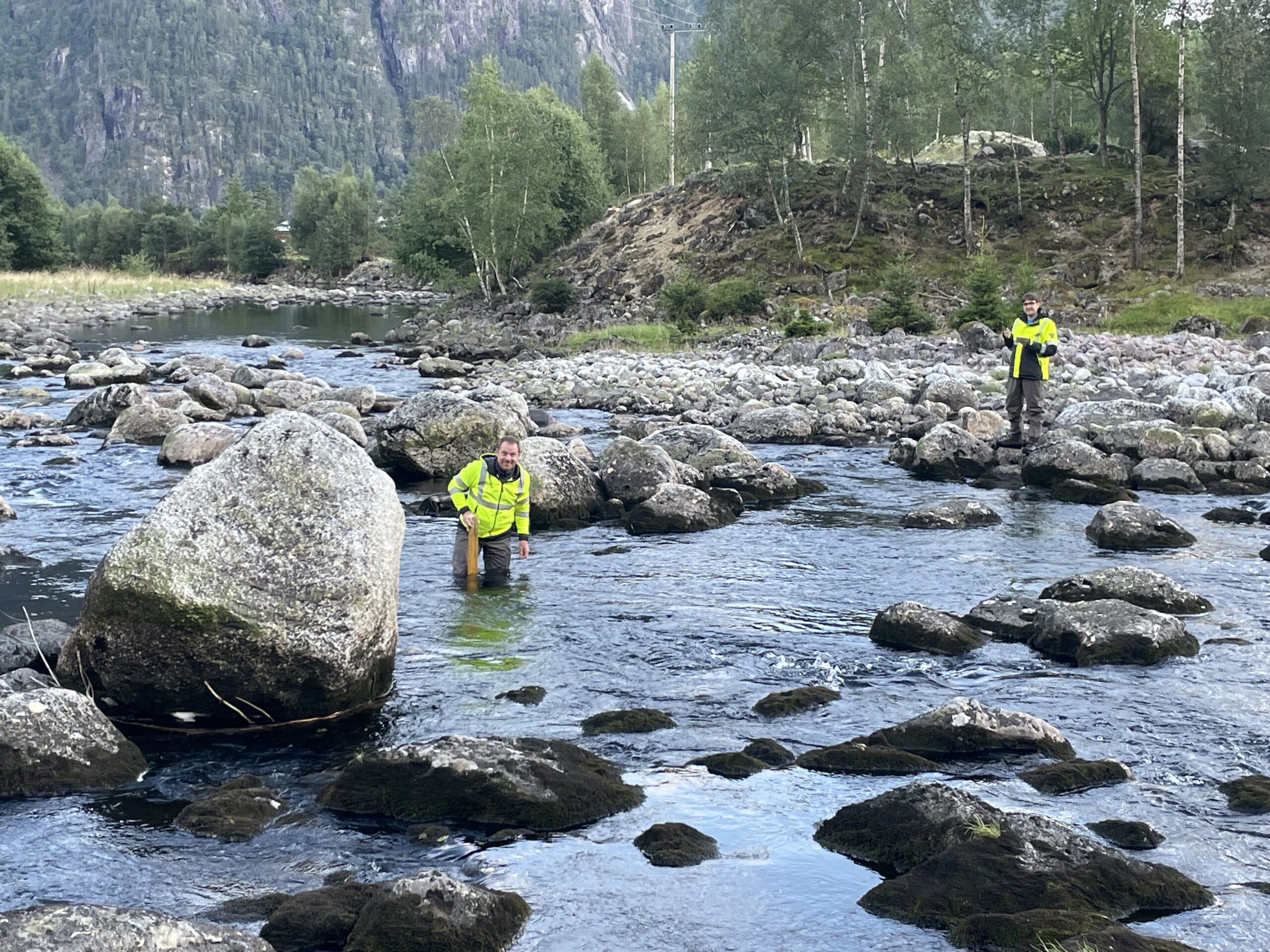In late August, researchers from SINTEF headed into the stunning surroundings of Brattlandsdalsåa and Roalkvamsåa to assess their current habitat conditions. These rivers are part of Røldal-Suldal power system and currently receive only local runoff, as the main water flow is diverted for hydropower production. Together with our partners at Lyse, NINA, Intoto and INRAE, we are working to understand how much water is needed to support healthy habitat conditions and boost spawning opportunities for the local population of large trout. By investigating the local habitat conditions and comparing them with the trout’s known habitat preferences, we gain a quick and effective understanding of current conditions, and a clear idea of what changes could help improve them. This research is part of ReHydro’s broader goal: showing how sustainable hydropower refurbishment can also mean better outcomes for biodiversity.
We’re exploring two different approaches to restore flow in these rivers. In Roalkvamsåa, we’re looking at the option of releasing environmental flow from a small hydropower plant. While this may slightly reduce the total power production, the potential environmental gains are significant and could make the loss more than worth it. Meanwhile, in Brattlandsdalsåa, we’re evaluating the possibility of pumping water from the downstream lake Suldalsvatn back into the river to secure flow in key spawning areas in the most downstream part of the river.
In our efforts, we’re combining high-tech tools with tried-and-true field methods. We’re testing a simplistic habitat assessment method developed by our partner INRAE (France’s National Research Institute for Agriculture, Food and Environment), and using both remote sensing technologies and traditional hydraulic-habitat survey techniques.

